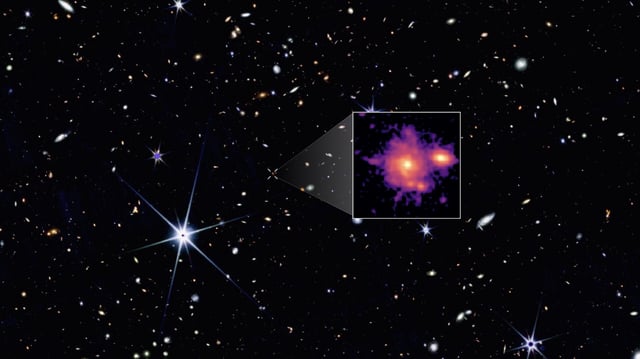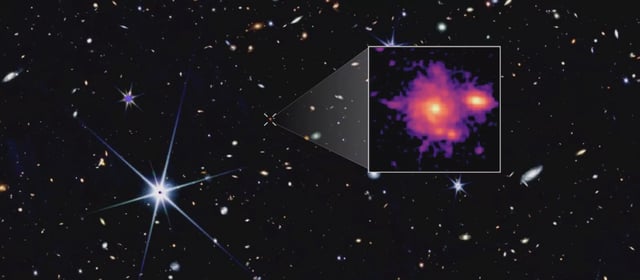Overview
- Zhúlóng, observed at redshift 5.2, is the most distant spiral galaxy resembling the Milky Way, formed just one billion years after the Big Bang.
- The galaxy features a mature structure with a central old bulge, a 60,000-light-year-wide star-forming disk, and defined spiral arms.
- Its discovery was made through JWST's PANORAMIC pure parallel survey, designed to efficiently map the distant Universe and uncover rare massive galaxies.
- With a stellar mass exceeding 100 billion solar masses, Zhúlóng demonstrates that massive, well-ordered spiral galaxies can form far earlier than previously thought.
- Follow-up observations with JWST and ALMA are planned to further study Zhúlóng’s properties and formation, with wide-area surveys expected to uncover more such galaxies.


